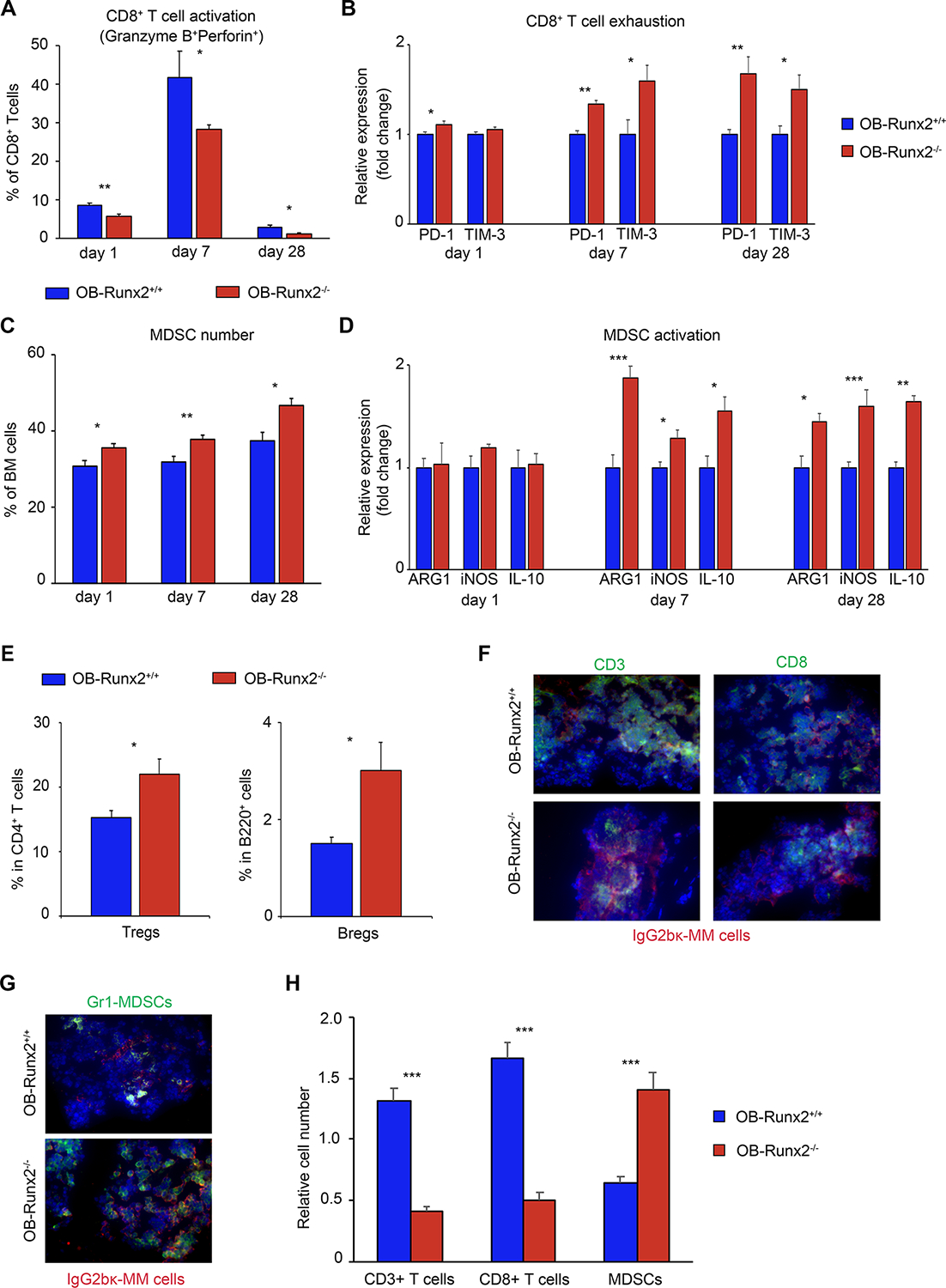Figure 6.

OB-Runx2 deficiency impairs the antitumor immune response to MM cells. OB-Runx2+/+ or OB-Runx2−/− mice were i.v. injected with 5TGM1-Luc MM cells (106 cells per mouse) (n=24 mice/group). BM cells were harvested on days 1, 7, and 28 after tumor cell injection for FACS analysis (n=6 mice/group/time point). A, Percentage of activated (granzyme B+ perforin+) CD8+ T cells in all CD8+ T cells. B, Expression of PD-1 and TIM-3 in CD8+ T cells of OB-Runx2−/− mice relative to that in OB-Runx2+/+ mice. C, Percentage of MDSCs among all BM cells. D, Expression of ARG1, iNOS, and IL-10 in MDSCs of OB-Runx2−/− mice relative to that in OB-Runx2+/+ mice. E, Percentage of Tregs among CD4+ T cells and of Bregs among B220+ cells on day 28. F-G, Representative images of immunofluorescence staining of bone sections harvested from mice 28 days after tumor cell injection showing localization of CD3+ T cells and CD8+ T cells (F) and MDSCs (G) within the tumors (400×, EVOS fluorescence microscope, Thermo Fisher). H, Quantification of the CD3+ T cells, CD8+ T cells, and MDSCs within tumors (n=6 mice/group). Data are presented as mean ± SEM. *P < 0.05, **P < 0.01, ***P < 0.001.
